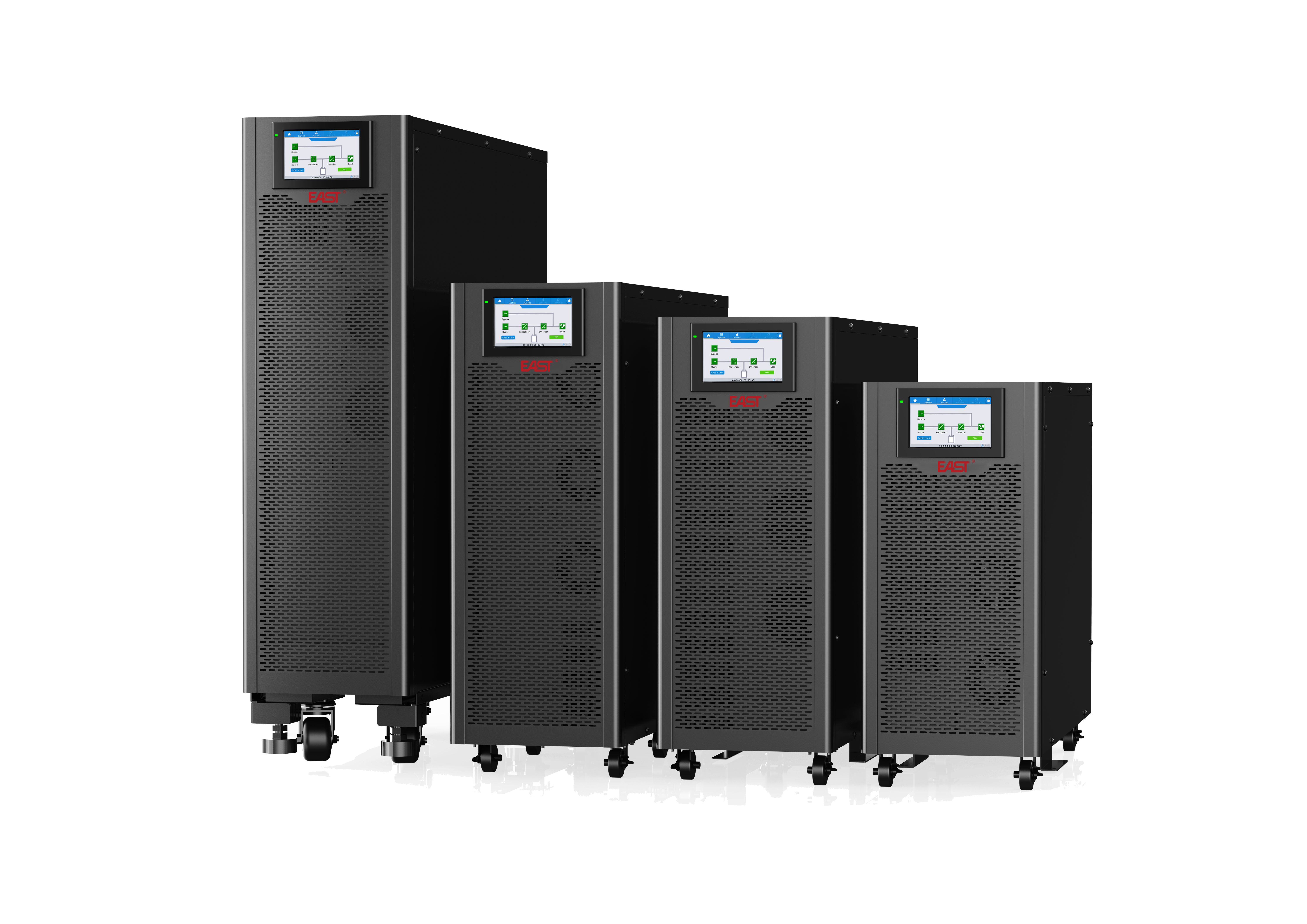Email format error
Email cannot be empty
Email already exists
6-20 characters(letters plus numbers only)
The password is inconsistent
Email format error
Email cannot be empty
Email does not exist
6-20 characters(letters plus numbers only)
The password is inconsistent


Line Interactive vs Offline UPS: A Comprehensive Guide for Choosing the Right Backup Power Solution
In today's digital world, ensuring uninterrupted power supply is crucial for both businesses and individuals. Whether you're protecting critical servers in a data center or simply safeguarding your home office setup, understanding the differences between various types of Uninterruptible Power Supplies (UPS) is essential. Two common types of UPS systems are Line Interactive and Offline UPS. This blog will delve into the Line Interactive vs Offline UPS comparison, helping you make an informed decision on which UPS system best suits your needs.
What is an Uninterruptible Power Supply (UPS)?
An Uninterruptible Power Supply (UPS) is a device that provides emergency power to a load when the main power source fails. The primary purpose of a UPS is to maintain power for critical systems during short-term outages and protect against power surges, voltage drops, and other electrical disturbances.
UPS systems come in various types, with the most common being Offline, Line Interactive, and Online. Each has its own set of features and applications, making it crucial to choose the right one for your specific requirements.
Understanding Offline UPS
An Offline UPS, also known as a standby UPS, is the most basic form of UPS. It typically remains in a standby mode, monitoring the input power. When it detects a power failure or fluctuation beyond acceptable levels, it switches to battery power to supply energy to the connected load.
Key Features of Offline UPS:
1. Simple Design: Offline UPS systems have a straightforward design, making them easy to use and maintain.
2. Cost-Effective: These systems are generally more affordable compared to other types of UPS.
3. Suitable for Low-Power Devices: Offline UPS systems are ideal for protecting small devices like personal computers, home entertainment systems, and basic office equipment.
4. Limited Protection: They offer basic protection against power outages but may not be sufficient for sensitive or high-power equipment.
What is Line Interactive UPS?
Line Interactive UPS systems are more advanced than Offline UPS systems. They provide better protection against power fluctuations by actively regulating voltage while still maintaining battery backup capabilities.
Key Features of Line Interactive UPS:
1. Voltage Regulation: Line Interactive UPS systems have a built-in automatic voltage regulator (AVR) that stabilizes incoming voltage by either boosting or reducing it as needed.
2. Improved Efficiency: These systems are more efficient in managing power, reducing the need to switch to battery power for minor voltage fluctuations.
3. Longer Battery Life: By reducing the frequency of battery usage, Line Interactive UPS systems can extend the overall battery life.
4. Ideal for Medium to High-Power Devices: These systems are suitable for protecting servers, network equipment, and other critical infrastructure in both home and business environments.
Line Interactive vs Offline UPS: Key Differences
When comparing Line Interactive vs Offline UPS, several key differences become apparent. Understanding these differences will help you determine which type of UPS system is best suited for your needs.
1. Voltage Regulation and Power Conditioning
One of the most significant differences between Line Interactive and Offline UPS systems is their ability to regulate voltage. Line Interactive UPS systems are equipped with an AVR, which continuously monitors and adjusts the voltage to safe levels. This feature provides superior protection against brownouts, surges, and other power disturbances.
In contrast, Offline UPS systems do not offer voltage regulation. They only switch to battery power when the input voltage drops below a certain threshold, which means that during minor voltage fluctuations, the connected devices may still experience some power instability.
2. Switching Time
Switching time refers to the duration it takes for a UPS to switch from the main power source to battery power during an outage. Offline UPS systems typically have a slightly longer switching time (around 5-10 milliseconds) compared to Line Interactive systems, which have a faster switching time (around 2-4 milliseconds). Although these differences may seem minor, they can be critical for sensitive electronic equipment that requires a more stable power supply.
3. Cost and Complexity
Offline UPS systems are generally less expensive and less complex than Line Interactive systems. Their simple design makes them more affordable and easier to maintain. However, this simplicity comes at the cost of reduced power protection capabilities.
Line Interactive UPS systems, while more expensive, offer better protection and additional features like voltage regulation. The added complexity of these systems also means that they may require more frequent maintenance and have a higher initial cost.
4. Application Scenarios
Offline UPS systems are best suited for environments where power outages are infrequent, and the connected devices do not require advanced power protection. They are ideal for home use, small offices, and basic electronic devices.
Line Interactive UPS systems are better suited for environments where power fluctuations are more common, and there is a need to protect more sensitive or critical equipment. These systems are commonly used in small to medium-sized businesses, network closets, and data centers.
Advantages and Disadvantages of Line Interactive UPS
Understanding the pros and cons of Line Interactive UPS systems can help you decide whether this type of UPS is the right choice for your needs.
Advantages:
1. Enhanced Power Protection: With AVR technology, Line Interactive UPS systems provide better protection against power disturbances compared to Offline UPS systems.
2. Extended Battery Life: The reduced frequency of battery usage in Line Interactive systems leads to longer battery life and lower replacement costs.
3. Faster Switching Time: The quick transition to battery power minimizes the risk of power disruption to connected devices.
4. Versatile Applications: Suitable for a wide range of devices, from small office equipment to servers and networking gear.
Disadvantages:
1. Higher Cost: Line Interactive UPS systems are more expensive than Offline UPS systems due to their advanced features.
2. Increased Complexity: The additional features and components in Line Interactive UPS systems can make them more complex to install and maintain.
3. Potential Overkill for Basic Needs: For users with simple power backup requirements, the additional features of a Line Interactive UPS may be unnecessary.
Advantages and Disadvantages of Offline UPS
Similarly, assessing the advantages and disadvantages of Offline UPS systems can help you determine whether they meet your needs.
Advantages:
1. Affordability: Offline UPS systems are more budget-friendly, making them accessible to a wider range of users.
2. Simplicity: The straightforward design of Offline UPS systems makes them easy to install, use, and maintain.
3. Suitable for Basic Needs: These systems are ideal for users who require basic power backup without the need for advanced features.
Disadvantages:
1. Limited Power Protection: Offline UPS systems do not offer voltage regulation, which can leave connected devices vulnerable to power fluctuations.
2. Longer Switching Time: The slightly longer switching time can pose a risk to sensitive equipment.
3. Shorter Battery Life: Frequent switching to battery power can reduce the overall lifespan of the battery in Offline UPS systems.
Conclusion: Which UPS Should You Choose?
When choosing between Line Interactive vs Offline UPS, it's important to consider your specific power protection needs, budget, and the types of devices you need to protect.
- If you're looking for basic, cost-effective power backup for home use or small offices, and your equipment doesn't require advanced power protection, an Offline UPS may be sufficient.
- On the other hand, if you need reliable protection against power fluctuations and require a UPS system for more sensitive or critical equipment, a Line Interactive UPS is likely the better choice.
In summary, the decision between offline ups vs line interactive ups comes down to balancing your need for power protection with your budget and application requirements. By understanding the differences between these two types of UPS systems, you can make an informed decision that ensures your devices remain protected and operational, even during power disruptions.

